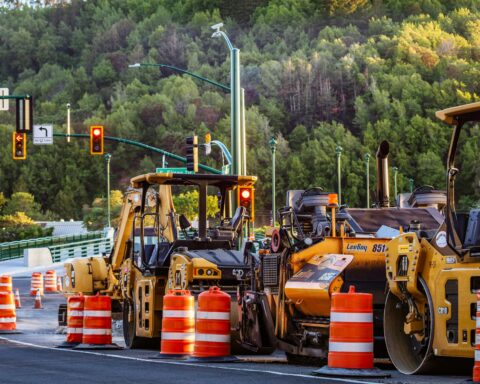Two federal agencies have announced initiatives that will help school districts nationwide modernize aging infrastructure and implement clean-energy technology, such as solar panels and electric vehicles.
The U.S. Department of Education last week made $47 million available to eight state education departments and one consortium to help school districts in disadvantaged communities upgrade facilities.
The discretionary grants will be dispersed over five years as part of the Supporting America’s School Infrastructure (SASI) program, which helps high-need local educational agencies (LEAs) provide students with a safe and healthy learning environment.
Across the country, many students go to school in unstable, century-old buildings with outdated technology, according to districts that applied for $178 million from the Department of Energy’s Renew America’s Schools Program (RASP) last summer. The three improvements most requested were HVAC systems, lighting and structure envelopes.
“Research has shown that modern, well-maintained facilities and healthy learning environments can help schools Raise the Bar by increasing student achievement, reducing absenteeism, and improving teacher retention,” Secretary of Education Miguel Cardona said in a press release.
Alabama, Arizona, California, Oregon, Rhode Island, Virginia and the territory of Saipan will receive up to $5 million each, while Pennsylvania will receive $2.6 million.
States can use the funds to help districts in disadvantaged communities conduct facility needs assessments, improve public school infrastructure data systems and hire staff as needed.
The DOE also awarded $10 million to a consortium made up of the Institute of Urban and Regional Development at the University of California-Berkeley, 21st Century School Fund, National Council on School Facilities, and Child Trends. The consortium will gather research, policies and best practices for designing and building facilities that foster health, safety, educational quality, energy efficiency and climate resilience, the DOE said.
The National Center on School Infrastructure (NCSI) awarded the grant and will use the consortium’s findings to help states assist local districts.
Meanwhile, the Treasury Department announced that school districts can claim tax credits through the Inflation Reduction Act to fund investments in clean energy infrastructure, such as electric school buses, solar panels and central geothermal systems.
Through elective pay, school districts who meet underlying requirements can claim clean energy tax credits. Once a district places an eligible property in service, it can alert the Internal Revenue Service (IRS) of its intention to claim the credit, and – if approved – the IRS will issue a payment in the amount of the credit.
Districts can use the tax credits in addition to federal grants and loans, the Treasury Department said.













